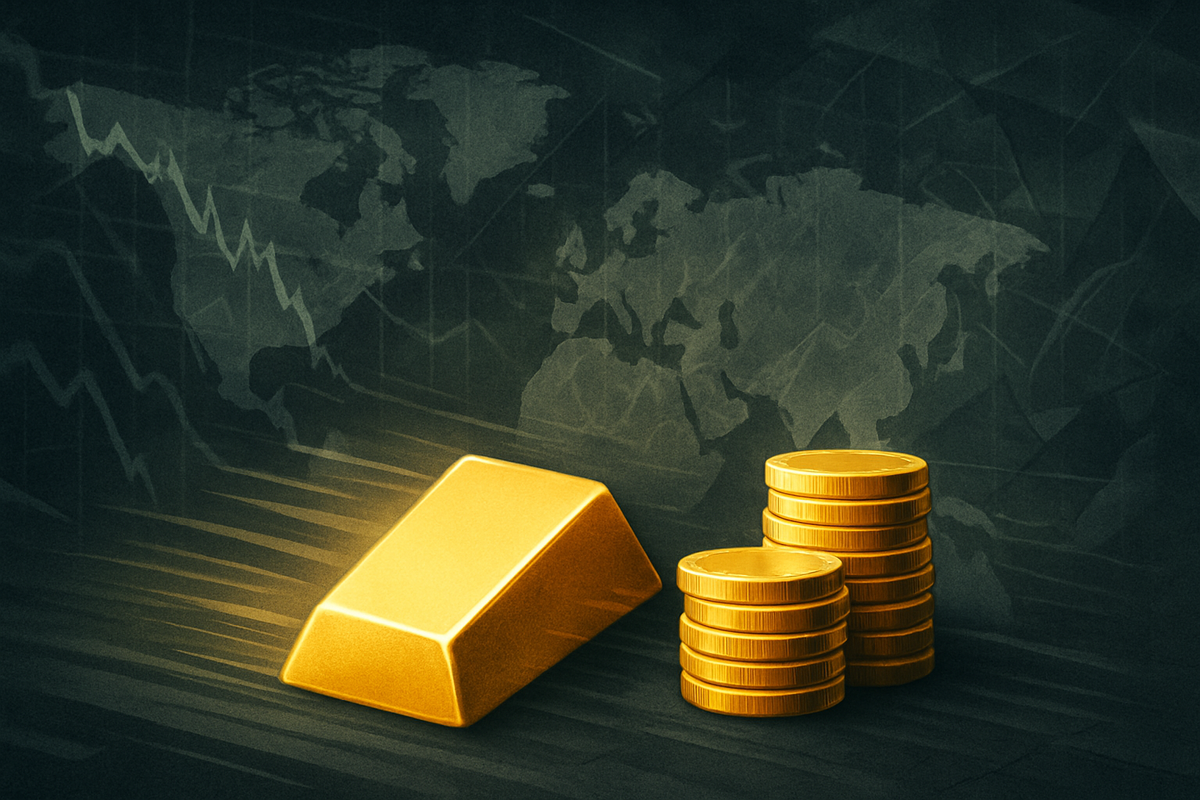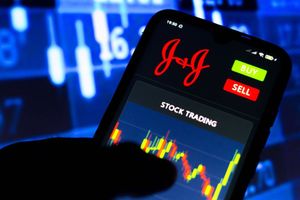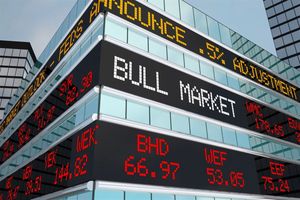
In a financial landscape increasingly defined by "profound and acute uncertainty," global investors are stampeding towards gold, propelling the precious metal to unprecedented highs. As of October 17, 2025, a complex interplay of financial vulnerabilities, escalating geopolitical tensions, and trade disputes has ignited a historic rally, solidifying gold's perennial role as the ultimate safe-haven asset. This surge reflects a deep-seated apprehension across markets, with participants seeking refuge from an unpredictable economic future.
The immediate implication of this flight to safety is a significant re-evaluation of risk across portfolios, as traditional assets face headwinds. Gold prices have not only breached the psychological $4,300 per troy ounce mark but have also set new records, signaling a pervasive lack of confidence in conventional economic stability and a collective pivot towards tangible wealth preservation.
Detailed Coverage: Unpacking the Gold Frenzy
The current gold rush is not a singular event but rather the culmination of several interconnected global stressors that have intensified throughout 2025. This year has witnessed a remarkable 60% gain in gold's value, with prices soaring 6.7% in just the past week, reaching a record $4,326 for New York spot gold on Thursday, and futures briefly touching $4,344.
A primary driver of this uncertainty is the financial sector instability. Concerns are mounting over stretched asset valuations, particularly within the technology sector, raising fears of a potential market correction. Simultaneously, sovereign debt markets are under immense pressure due to widening fiscal deficits, higher real interest rates, and elevated global debt levels, prompting a re-assessment of sovereign risk.
Geopolitical tensions continue to cast a long shadow over the global economy. Ongoing conflicts, notably the Russia-Ukraine war and the Israel-Hamas conflict, persist in disrupting cross-border trade, investment flows, and critical supply chains. These conflicts not only fuel higher commodity prices but also increase sovereign risk premiums, contributing to an environment of sustained global anxiety. Domestically, political fragmentation and policy volatility, exemplified by a partial US government shutdown in October 2025, further compound economic gloom, directly impacting investor confidence and decision-making.
Furthermore, escalating trade tensions, particularly between the United States and China, are a significant catalyst. The reimposition of aggressive tariff policies and concerns over rare earth export controls signal a strategic shift that extends beyond mere commodity pricing into national security considerations. These trade disputes create a cascade of uncertainties that have historically benefited precious metals. Adding to this, while some regions grapple with persistent inflationary pressures, expectations of US interest rate cuts have gained momentum. The Federal Reserve's dovish tilt, with Chair Jerome Powell acknowledging a softening labor market, has led to a near certainty of a 0.25% interest rate cut this month and another likely in December. Lower interest rates typically increase the attractiveness of non-yielding assets like gold.
The prolonged US government shutdown has exacerbated the situation by creating an "information vacuum." Delays in releasing critical economic data have forced investors to rely on incomplete information, amplifying market uncertainty and making accurate assessments of underlying economic conditions increasingly difficult. This environment has driven both central banks and institutional investors to significantly increase their gold holdings, diversifying reserves away from the US dollar and hedging against rising debt and fiscal uncertainty. The sustained demand at these historic levels suggests that markets anticipate continued challenges rather than temporary disruptions.
Corporate Currents: Winners and Losers in the Gold Rush
The significant surge in gold prices, fueled by pervasive economic uncertainty, creates a distinct landscape of winners and losers across various public companies. Industries directly involved in gold stand to gain substantially, while those reliant on gold as a raw material or sensitive to broader economic instability face considerable headwinds.
Gold mining companies are the most direct beneficiaries. As gold prices reach record highs, companies like Newmont Corporation (NYSE: NEM), Barrick Gold Corp. (NYSE: GOLD), Kinross Gold Corporation (NYSE: KGC), and Agnico Eagle Mines (NYSE: AEM) experience a direct boost to their revenues and profit margins. Their operational costs, such as labor and fuel, tend to be relatively stable in the short term, meaning that every additional dollar in gold price can translate into pure profit. This increased profitability often leads to enhanced cash flows, potentially higher dividends, share buybacks, and healthier balance sheets, incentivizing them to increase production and exploration efforts.
Gold streaming and royalty companies such as Franco-Nevada Corporation (NYSE: FNV), Wheaton Precious Metals Corp. (NYSE: WPM), and Royal Gold, Inc. (NASDAQ: RGLD) also thrive. These companies provide upfront financing to miners in exchange for the right to purchase future gold production or revenue at a discounted price. They benefit directly from rising gold prices as the value of their acquired gold or royalty streams increases, all while being insulated from the direct operating costs and capital expenditures associated with mining. Additionally, gold-backed Exchange-Traded Funds (ETFs) like SPDR Gold Shares (NYSEARCA: GLD) and iShares Gold Trust (NYSEARCA: IAU) see increased capital inflows, with their values appreciating directly with the price of physical gold.
Conversely, companies that use gold as a significant raw material are likely to face challenges. Luxury goods companies, including major players like LVMH (EPA: LVMH), which owns Tiffany & Co. and Bulgari, Richemont (SWX: CFR) (Cartier), and Kering (EPA: KER) (Boucheron), will see their input costs rise. While gold may represent a smaller portion of a high-end product's value, these brands must carefully navigate how to pass on increased costs to consumers without eroding demand, especially during periods of economic uncertainty when discretionary spending may be constrained.
Similarly, electronics and semiconductor manufacturers are impacted. Gold is indispensable in many electronic components due to its excellent conductivity. Companies involved in semiconductor packaging and testing, such as Chipbond Technology, have already reported drops in gross margins due to surging gold costs. Larger electronics manufacturers like Apple Inc. (NASDAQ: AAPL) could also be indirectly affected by rising component costs if they cannot fully pass them on to consumers. The dental industry, which uses gold in crowns and bridges, will also face higher costs for laboratories and practices, often passed on to patients. Furthermore, highly leveraged companies and those with vulnerable supply chains exposed to global instability, such as multinational corporations with significant international sales like Caterpillar Inc. (NYSE: CAT), could experience disruptions and increased operational expenses due to trade restrictions and softened demand in a broader economic slowdown.
Broader Implications: Gold's Enduring Significance
The current gold rush, driven by a confluence of economic uncertainty and geopolitical instability, is more than just a market anomaly; it signifies a broad recalibration of global financial strategies and reinforces gold's enduring role as a critical safe-haven asset. This phenomenon is deeply embedded within several significant financial and industrial trends, creating ripple effects across the global economy.
One of the most prominent trends is a pronounced shift to safe-haven assets. Investors are actively de-risking portfolios, moving capital away from volatile equities and traditional bonds towards tangible stores of value like gold. This "risk-off" sentiment is a direct response to global instability, with gold's performance often outpacing other investments during economic downturns, solidifying its reputation as a stable asset. This also fuels a boom in the mining sector, where elevated gold prices incentivize increased production, expanded exploration budgets, and potential mergers and acquisitions as companies seek to secure future output.
A crucial development is the sustained diversification by central banks, particularly those in emerging economies such as China, India, and Turkey. These institutions have become major purchasers of gold, systematically accumulating reserves as a strategic move away from the U.S. dollar, signaling a potential shift towards a more multipolar global financial system. This trend could accelerate discussions around gold-backed financial instruments or even digital currencies. The investor appetite for hard assets also extends beyond gold, with other precious metals like silver experiencing significant price surges.
The ripple effects are felt widely. While gold mining companies and precious metal service providers benefit from improved cash flow and heightened demand, industries using gold as a key input, such as jewelry manufacturers and electronics companies, face increased input costs and potential margin pressures. If the gold rush signifies persistent inflation or widespread economic instability, it could negatively impact consumer spending in other sectors. Regulatory and policy implications also emerge, with governments facing intensified pressure to manage inflation and reduce national debt as confidence in fiat currencies wanes. The rising price of gold can also unfortunately lead to a surge in illegal and artisanal mining activities, posing severe environmental degradation and human rights challenges, prompting renewed focus on regulations like the Dodd-Frank Act.
Historically, gold has consistently served as a refuge during times of economic and geopolitical upheaval, gaining value during events like the Great Recession, the COVID-19 pandemic recession, and the 1970s energy crisis. While the underlying human impulse for security remains constant, the current gold rush operates within a highly interconnected global financial system, leveraging sophisticated online trading platforms and featuring a proactive role of central banks in diversifying reserves. The contemporary focus on gold as a "debasement hedge" against fiat currency devaluation in an era of unprecedented national debt and monetary expansion is a defining characteristic that distinguishes it from earlier "rushes" like the 19th-century California Gold Rush, which primarily triggered economic transformation and inflationary pressures through a massive influx of physical gold.
The Road Ahead: Navigating Gold's Future
The gold market is poised for continued dynamism, with both short-term volatility and a bullish long-term outlook shaped by ongoing geopolitical tensions, economic uncertainties, and evolving monetary policies. Investors and companies alike must strategically adapt to this shifting landscape.
In the short term (next 6-12 months), gold prices are expected to remain volatile but with an underlying upward trend. Analysts predict gold could reach between $4,400 and $4,600 per ounce, with some even suggesting a test of $4,856 if global conflicts or economic recession escalates. Key drivers will include U.S. economic data releases, the trajectory of trade tensions, and the Federal Reserve's monetary policy decisions, particularly regarding anticipated interest rate cuts. A resolution to the U.S. government shutdown could temper some immediate safe-haven demand, but the broader sentiment for gold is likely to persist. For investors, managing volatility through diversification and strategies like dollar-cost averaging will be crucial.
The long-term outlook for gold remains robustly bullish. Various forecasts project significant growth, with some anticipating gold reaching $5,000 in 2026, potentially $6,500 by 2027, and even $10,000 by 2028 or 2030-2031. This sustained appreciation is underpinned by persistent inflation, continued central bank demand as part of de-dollarization efforts, and ongoing geopolitical uncertainty. The shift towards a multi-polar financial system, with nations like those in BRICS consolidating control over commodities, could further cement gold's role as a monetary asset. Furthermore, technological innovations in gold mineral extraction, integrating satellite technology, AI analytics, and blockchain traceability, are expected to enhance efficiency and sustainability, impacting the market dynamics.
Strategic pivots and adaptations are imperative for both companies and investors. Gold mining companies, for instance, are increasingly focusing on sustainable practices, adopting renewable energy sources, implementing ecological extraction techniques, and committing to carbon neutrality. Investing in advanced exploration technologies and ensuring supply chain resilience are also critical. For investors, gold should be viewed as a complementary asset within a diversified portfolio, serving as an ideal hedge against market volatility, especially during equity market downturns or periods of potential Fed easing. Prioritizing physical gold ownership can mitigate risks associated with paper markets, and a long-term approach, transcending short-term noise, is vital for insulating against systemic shocks. Emerging markets present both opportunities, with growing demand and untapped reserves, and challenges, such as political instability and illegal mining, which require careful navigation.
Concluding Thoughts: A Golden Horizon in Uncertain Times
The current gold rush event represents a profound and lasting shift in global financial dynamics, underscoring gold's indispensable role as a safe-haven asset in an era of heightened uncertainty. The unprecedented surge in prices throughout 2025, pushing gold to historic highs above $4,300 per ounce, is a clear signal from the market: stability and wealth preservation are paramount amidst a confluence of geopolitical instability, persistent inflation, and evolving monetary policies.
Key takeaways from this period include the solidified perception of gold as an "asset for all occasions," its proven ability to hedge against currency debasement and geopolitical shocks, and the significant impact of central bank accumulation on its price trajectory. The "de-dollarization" trend, driven by nations diversifying their reserves, has been a primary catalyst, reinforcing gold's status as a fundamental monetary asset. This rally has not only validated gold's traditional role but has also led to increased revenues and profitability for gold mining companies and related service providers, while posing cost challenges for industries reliant on gold as a raw material.
Moving forward, the market consensus points to continued strength in gold prices through 2026 and beyond, with some analysts forecasting further record highs that could potentially reach $5,000 or even $10,000 in the coming years. While short-term volatility and potential corrections due to profit-taking are expected, the underlying bullish sentiment remains robust. This signifies a lasting impact on investor psychology, where gold is increasingly viewed as an essential component of a resilient portfolio, rather than just a cyclical trade.
For investors, the coming months will demand vigilance. It is crucial to watch for key indicators such as the U.S. Federal Reserve's monetary policy decisions (especially interest rate adjustments), the evolving geopolitical landscape (global conflicts and trade tensions), the performance of the U.S. dollar, and global inflation data. Continued central bank gold purchases and investment flows into gold ETFs will also provide critical insights into sustained demand. While physical gold, gold ETFs, gold mining stocks, and gold futures offer various avenues for exposure, a diversified approach and strategic allocation, rather than attempting to time the market perfectly, will be essential for navigating this dynamic and potentially golden horizon.
This content is intended for informational purposes only and is not financial advice





